Google Forms is a powerful tool for gathering data in an educational setting, and it’s easy for both parents and students to use. Teachers and school administrators can use the intuitive drag-and-drop interface to create custom forms, surveys, quizzes, and polls that help them get the information they need to make better educational decisions.
Here, we share 40 ideas on how to use Google Forms in the classroom — and we offer an alternative data-gathering tool that may be a better choice for your school. Plus, we get into the benefits of using Google Forms for teachers, students, and parents.

Looking for the best alternative to Google Forms?
Jotform’s full-featured form-building solution is mobile-friendly and has the most integrations in the industry. Use it to collect payments, automate workflows, gather leads, and more.
40 ways to use Google Forms in the classroom
1. Bell ringers
Get kids excited to learn by asking them a quick question at the start of the day and having them answer in Google Forms. The question can be about something they learned the day before or a new topic.
2. Sign-in and sign-out sheets
Administrators and teachers can use Google Forms to have students (or their parents) sign students in and out of class if they have to leave for an appointment or if they come in late.
3. Quizzes and surveys
“One way to use Google Forms is to create quizzes and surveys,” says Scott Winstead, founder of My eLearning World, which covers online learning both in the classroom and in business settings. “Quizzes can be used for assessment purposes, and surveys can be used to collect data about students’ learning experiences.”
4. Word clouds
Word clouds are a way to visually display students’ responses to a question posed in class. The more students respond with a certain word, the larger that word appears in the word cloud.
After presenting a lesson, teachers can check students’ understanding by asking them to fill out a simple Google Form, which automatically tallies the responses. They can then paste the responses into a word cloud generator such as Mentimeter to create a custom word cloud to show the class how they did.
5. Learning games
Gamification is a fun way to make learning more engaging, especially for younger students or difficult topics. Teachers can create a quiz in Google Forms and then import it to a tool like Quizalize to turn it into an interactive learning game that captures students’ attention.
Pro Tip
Take attendance, build quizzes and tests, collect permission slips, and more with Jotform — it’s free!
6. Permission forms
Use Google Forms to create permission slips for school field trips and email them directly to parents. This saves students the hassle of taking paper forms home and remembering to bring them back.
7. Digital escape rooms
For older students or those who love games, teachers can turn their Google Form into a virtual form-based escape room. Use the Data Validation feature in Google Forms to create one or multiple “locks.” In order to escape to the next question or out of the form, students have to input the correct answer. This works especially well for math or science quizzes.
Find out more about them in our guide, how to make an escape room on Google Forms.
8. Mood check-in
The way a student feels greatly affects how well they learn. Teachers can create a mood check-in form and use it daily or weekly to assess the mood of their students and then compare that information with student performance.
9. Emergency contact information forms
It’s important for schools to have emergency contact information for students’ families, and Google Forms makes it easy to collect this information and organize it in a spreadsheet.
10. Personalized emails
When teachers share Google Forms with students via Gmail, they can send personalized notes with each form. For example, teachers may offer individual guidance based on previous quiz results or detailed instructions for an area where a student is struggling.
11. Charts, graphs, and other visual representations
Google Forms integrates directly with Google Sheets, which is a great tool for making visual representations of data. Using these applications, teachers can help students learn different concepts by creating graphs, charts, and more.
12. Schedules
“Google Forms can also be used to create schedules and sign-up sheets,” says Winstead. “For example, a teacher could use a Google Form to create a schedule for small group work, and students could use a Google Form to sign up for clubs or extracurricular activities.”
13. Anonymous surveys and polls
While teachers often use Google Forms for quizzes, they can also use it to create anonymous surveys and polls. Anonymization can come in handy when administrators want to survey hundreds or thousands of students at once.
For more information, see our guide: How to make an answer key in Google Forms
14. School trip lessons
After a school trip, teachers and administrators can poll students for feedback about the trip or use Google Forms to quiz students about what they learned. This helps students connect what they saw during the trip with concepts they’ve been talking about in the classroom.
15. Pulse polls
Quickly polling students on how they’re feeling on a given day or whether they have any specific feelings on certain topics can be really helpful for teachers and students. “Polls can be used to gather data about student opinions on a variety of topics,” says Winstead.
16. Student intro forms
At the beginning of the school year, teachers can ask students to fill out “getting to know you” forms, providing information about their interests, family, strengths and weaknesses, and more. This is a great way for teachers to get to know their students on a more personal level.
17. QR codes
Teachers and administrators can use QR code generators to create QR codes that lead to specific Google Forms, providing students with a quick way to access forms. This is especially useful for events like parent and student information nights, making it easy for everyone to register for specific school teams or clubs. Just print out the QR codes and have people scan them to access the registration forms.
Check out our guide on how to create a QR code for a Google Form.
18. Lesson plans
Teachers can use Google Forms as a planning template for creating daily lessons. Simply add fields to your form for learning objectives, activities, and more, and then fill it out each day.
19. Progress logs
Google Forms is a great choice for tracking progress in daily or weekly logs. Teachers can easily see how students are doing in any area — from exercise and nutrition to math and science.
20. Parent feedback
Teachers may benefit from occasionally polling parents about specific topics, such as class logistics, field trips, curriculum feedback, and more. It’s easy to create polls for parents on Google Forms, and teachers can decide whether to make them anonymous.
21. Teacher knowledge-sharing
In some schools, teachers work in teams or groups, depending on the grade or subject they teach. If they need to share ideas with each other, such as about the curriculum, student progress, or logistics, they can use Google Forms to collect information from each teacher.
22. Choose-your-own-adventure activities
Google Forms offers skip logic, which is a great way to create more tailored activities. Teachers can branch questions based on students’ answers to previous questions.
23. Reading records
To encourage students to develop strong reading habits, teachers can create a reading record form that helps students capture information about the books they’ve read. At the end of the year, teachers can aggregate the data and show students all the books they finished that year. Teachers can also offer rewards to students for reading a certain number of books.
24. Order forms
Some schools have branded merchandise, such as T-shirts or hats with the school name and logo. Google Forms offers a simple way to create order forms to collect the information required.
25. Visual activities
If your students are still learning to read, Google Forms can help you make it easier for younger students to participate. It gives you the ability to add images to your form and provide visual cues that can help them.
26. Reservations for clubs, meetings, or outings
Some clubs, meetings, or field trips have limited spaces available. Schools can use Google Forms to provide a way for students to reserve their spot or select a time slot.
27. Student-created activities
Google Forms is so easy to use, that even students in earlier grades can create their own forms, polls, and quizzes to share with their classmates.
28. Equipment tracking
Schools often have a limited amount of sports or technology equipment. Teachers and administrators can create signup sheets in Google Forms for students to sign out and return the equipment, allowing the school to track who has the equipment and when they should return it.
29. Project status
Teachers need to know how students are doing on large projects and whether they are on track to complete projects on time. A great way to quickly collect this information is with Google Forms. Just create a status update form and get the clarity you need from students in a few minutes.
30. Evaluation rubrics
Teachers can create rubric templates in Google Forms and use them to grade assignments, essays, projects, and more.
31. Self-assessments
It’s important for students to learn how to evaluate their own work and performance, especially in group projects. Teachers can use Google Forms with self-evaluation questions for students to fill out.
32. Peer evaluations
Students can provide feedback on their peers’ performance in group projects or other collaborative projects using Google Forms. This gives teachers insight into group dynamics to better evaluate the individual skills and strengths of students. Teachers can choose to make the feedback forms anonymous.
33. Discipline referrals
If teachers need to discipline certain students for specific offenses, such as causing a disturbance in class, they can record the details in a Google Form for the school’s administrator. This provides a record of when the issue occurred, the student(s) involved, and a full account of the incident.
34. Parent volunteer signups
Many schools allow parents to help out in the classroom or during special school events. Collect parent information and availability using Google Forms.
35. Help requests
Teachers can create a generic help request form in Google Forms for students to sign up to receive extra help from them on specific lessons, topics, or personal issues.
36. Assigning partners and groups
Instead of randomly assigning teams, teachers can use Google Forms to ask students for their first, second, third, and fourth picks for partners and group members. After aggregating the results, teachers can consider this information when assigning partners or groups.
37. Assignment tracking
For older students who have to turn in large assignments, Google Forms can be useful for tracking submissions. When a student is turning in an assignment, they can fill out the form with their name, date, and link to the assignment, enabling teachers to have all of this information in one place.
38. Teacher assessments
Google Forms makes it easy for teachers to gather feedback from students on specific lessons and topics, teaching styles, curriculum, and more.
39. Bibliographies
When students have to conduct detailed research for assignments, teachers can have them track their sources in a Google Form. It can capture all the necessary information, such as source title, author, publication date, medium, and more. Once students have completed their research, they can create a spreadsheet of all of their submissions to show the sources they used.
40. Exit tickets
Before heading out for the day, have students fill out a Google Form with the answer to one question that’s based on something they learned that day. “Exit tickets can be used to assess student understanding at the end of a lesson,” says Winstead.
Benefits of using Google Forms in the classroom for teachers
It’s clear that Google Forms has numerous uses in the classroom, but does using it really benefit teachers? Yes! Here’s why:
- It makes grading quizzes and tests more efficient. With the self-marking feature in Google Forms, teachers no longer have to manually grade tests and quizzes. Google Forms can do the marking for you, so all you need to do is review the results. This functionality can save teachers hundreds of hours over the course of a school year.
- It improves decision-making. Google Forms gives teachers a wealth of student data to review and analyze. Identifying trends and anomalies can help guide their teaching.
- It saves time. Instead of manually creating forms and printing, copying, and distributing them, teachers can create a digital version of the form with ease and share it with students or parents online.
Benefits of Google Forms in the classroom for students
Teachers benefit greatly from Google Forms, but they aren’t the only ones. It can help students as well:
- They gain experience using online software. Especially for younger students, using Google Forms offers an opportunity to become familiar with online applications. It’s intuitive and easy to use, so students as young as four or five years old can learn basic actions.
- It means less paperwork to manage. Students of all ages benefit from digital forms like Google Forms because they no longer need to worry about taking pieces of paper home and bringing them back to school — which can often result in lost, torn, or crumpled forms.
- It makes forms easily accessible. If students need to refer to other Google Forms, they can easily find it in their Google Workspace. Unlike hard copies that are often easy to misplace, Google Forms are organized in folders and searchable in Google Workspace.
Benefits of Google Forms in the classroom for parents
While parents aren’t in the classroom, they also often have to use tools like Google Forms. Parents are likely to appreciate these benefits:
- Expedited return of information: If teachers or administrators require parents to provide information, such as permission for a field trip, for example, Google Forms offers a way for them to instantly provide the details needed without having to send paper forms back with their kids to school.
- Fast access to student files: Whether it’s a form, quiz, or questionnaire, students can easily share their Google Forms with parents through the Google Workspace. Teachers can do the same, enabling parents to take an active role in their children’s education.
- Easily trackable records: Google Forms provides parents with a digital paper trail of teacher and administrative information — one that won’t get lost or damaged. This way, parents can easily reference teacher or administrative information when needed to support their children.
A Google Forms alternative: Jotform
While Google Forms can support teachers and school administrators, an excellent Google Forms alternative may help you do even more.
Jotform is a data-gathering tool that comes with hundreds of ready-to-use form templates specifically made for educational settings, such as scholarship application forms, multiple-choice surveys, course evaluation forms, and much more. In addition, Jotform also offers free table templates to help organize form data, such as class attendance, student information, progress tracking, and more.
Jotform offers a robust feature set that may be a better fit for your school than Google Forms. Check out our toolkit for teachers to learn more.
See also Jotform’s detailed guide about: Google Forms


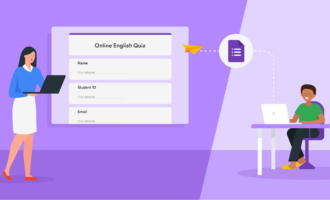
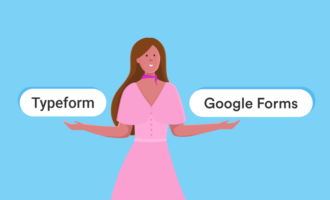









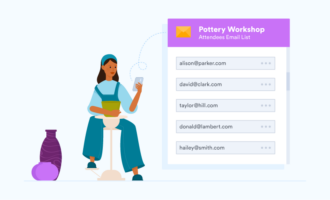



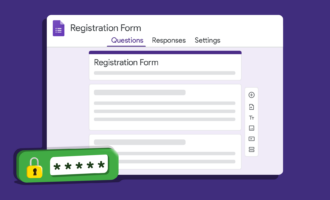





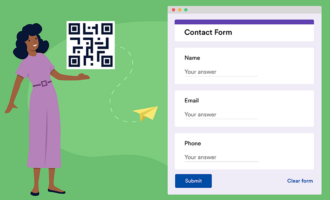

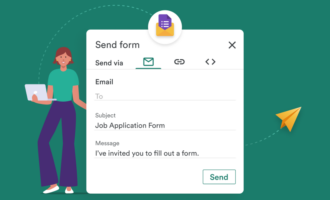




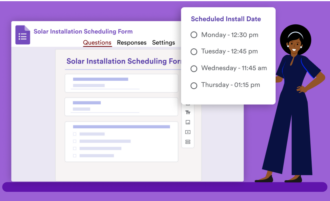










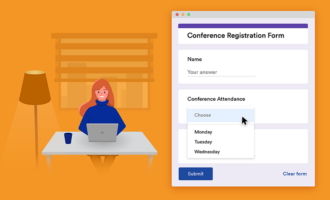
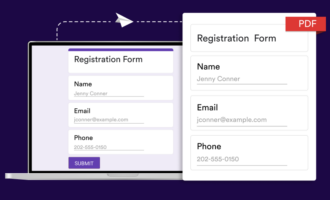







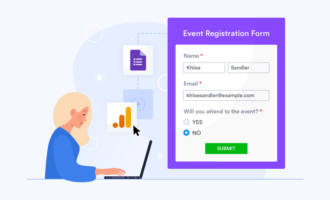




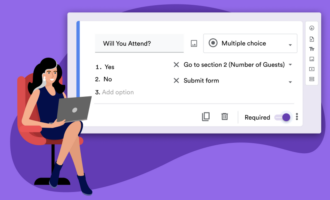









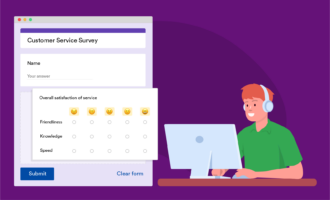


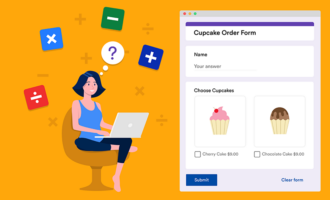

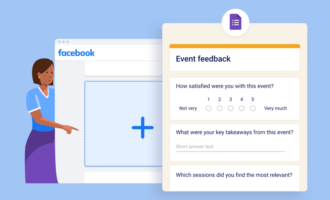
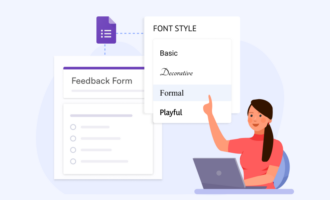



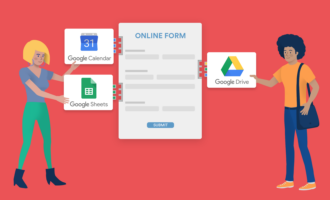








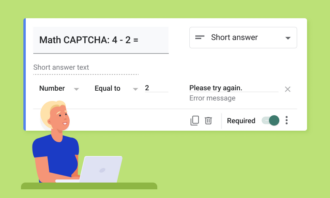


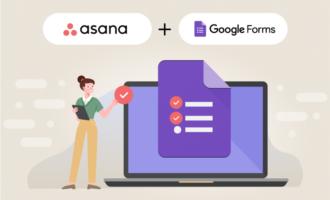



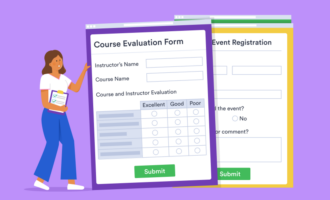

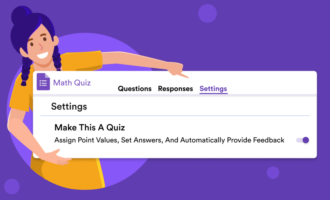


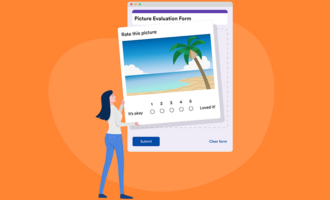



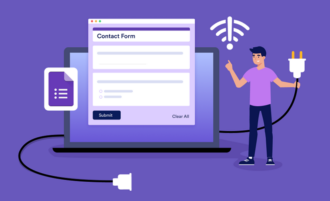

Send Comment: